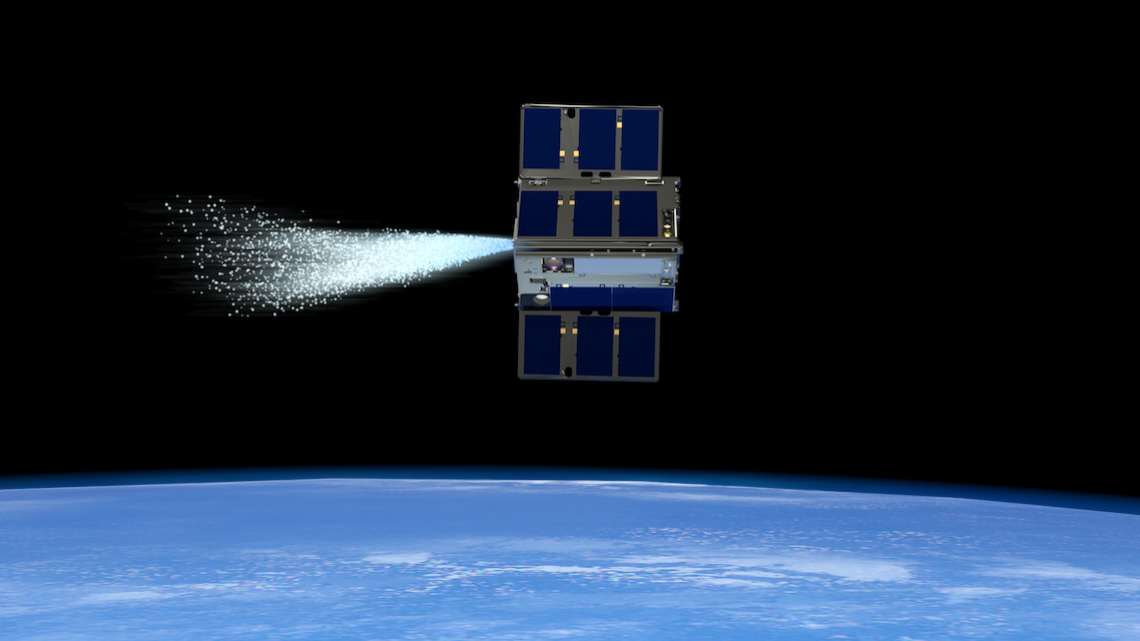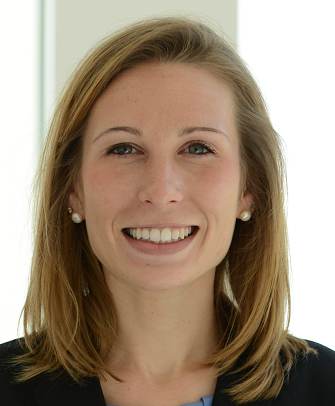
Illustration depicting a small satellite propelling itself in low-Earth orbit.
News directly from Cornell's colleges and centers
Petro earns Air Force award to research next-gen spacecraft propellants
By Chris Dawson
With the advancement of satellite propulsion systems will come a new age in space exploration, which is why the Air Force Office of Scientific Research has selected Elaine Petro, assistant professor of mechanical and aerospace engineering at Cornell, for a Young Investigator Program Award that will fund research into next-generation propellants.
Petro is among 58 researchers selected nationally to receive a 2023 award from the highly competitive early-career award program recognizing prior academic achievement and potential for significant scientific breakthrough. These awards “foster creative basic research in science and engineering, enhance early career development of outstanding young investigators, according to an Air Force announcement.
Petro, from the Sibley School of Mechanical and Aerospace Engineering, leads the Advanced Space Transit and Architectures (ASTRA) Lab at Cornell, which focuses on spacecraft electric propulsion, flight science-focused missions, small satellites, and missions with planetary science objectives.
Her application, “Investigating the chemical stability of ionic liquid ions,” was chosen for funding in the program area of Propulsion and Power.
The development of ever-smaller satellites has created the need for new propulsion systems and new propellants. Petro’s research at Cornell focuses on novel propulsion approaches that work very well at the small scale, such as for CubeSats. She knows that it simply does not work to take existing propulsion systems and shrink them. Researchers are finding that the new propellants behave in ways very different from what space scientists are used to.
“Older systems relied on noble gases, which are simple and unreactive, so they didn’t give a lot of surprises,” Petro said. “These new propellants are manufactured in the lab with complex chemical structures and we don’t know enough about them yet.” In fact, some recent tests performed by the Air Force have shown that researchers are unable to account for where 50% of the propellant is going.
Petro has proposed a three-year research plan to learn more about how these propellants may react under realistic operating conditions. The first step will be to take existing models and methods created by Petro and her group and apply them to these new propellants. Her theory is that some of the molecules in the propellant are breaking down in the plume and reacting with each other in ways not predicted. Her model will be able to evaluate this theory’s viability.
Once she feels her model has captured these reactions, she will use it to compare simulations of various propellant plumes with optical spectroscopy and Raman gas analyzer data from actual propellant plumes. “When we understand the behavior of molecules in the plume, we can use the models to test the many possible lab-synthesized propellants and help optimize the performance of these propulsion systems,” Petro said.
Media Contact
Get Cornell news delivered right to your inbox.
Subscribe

